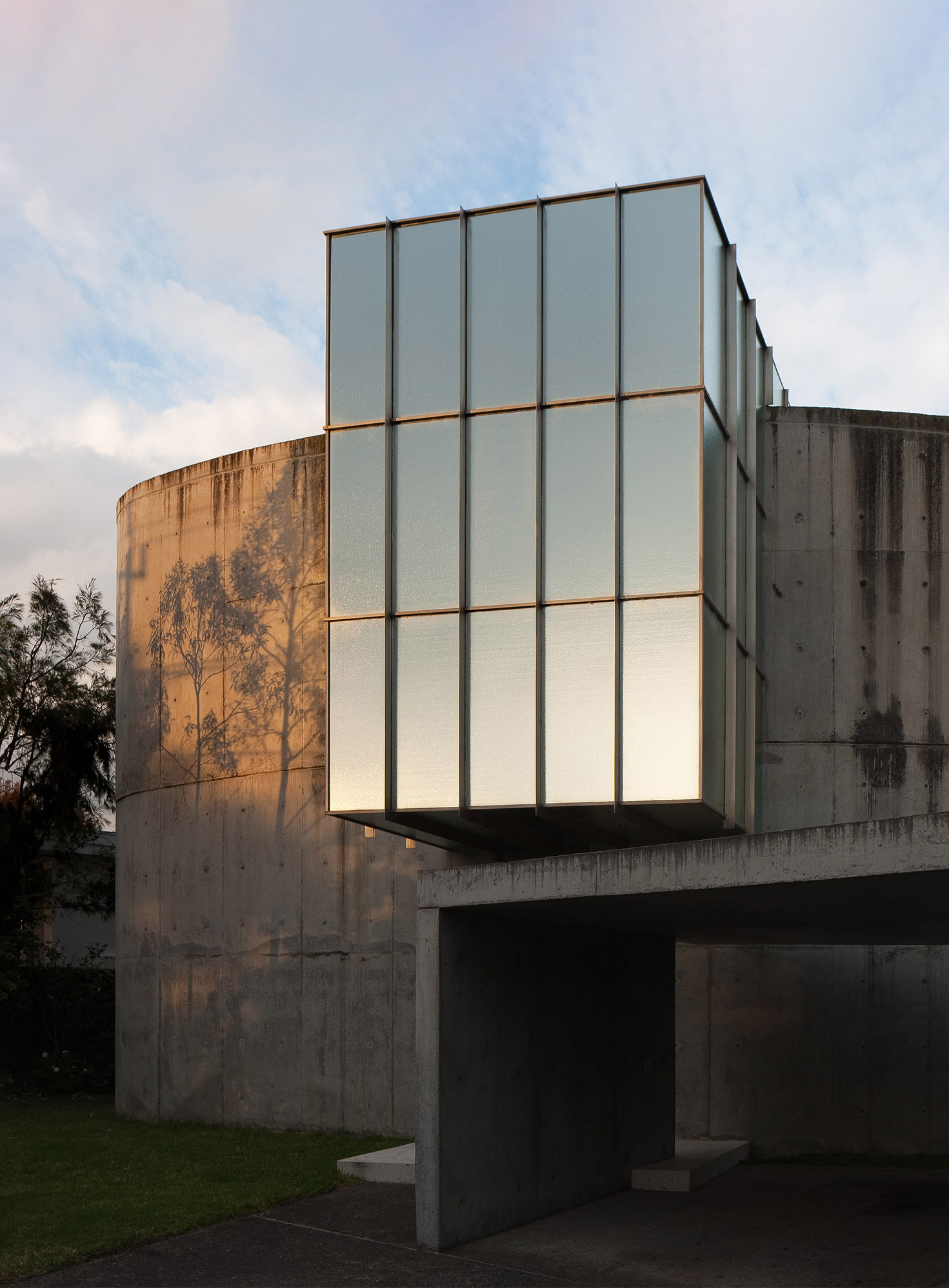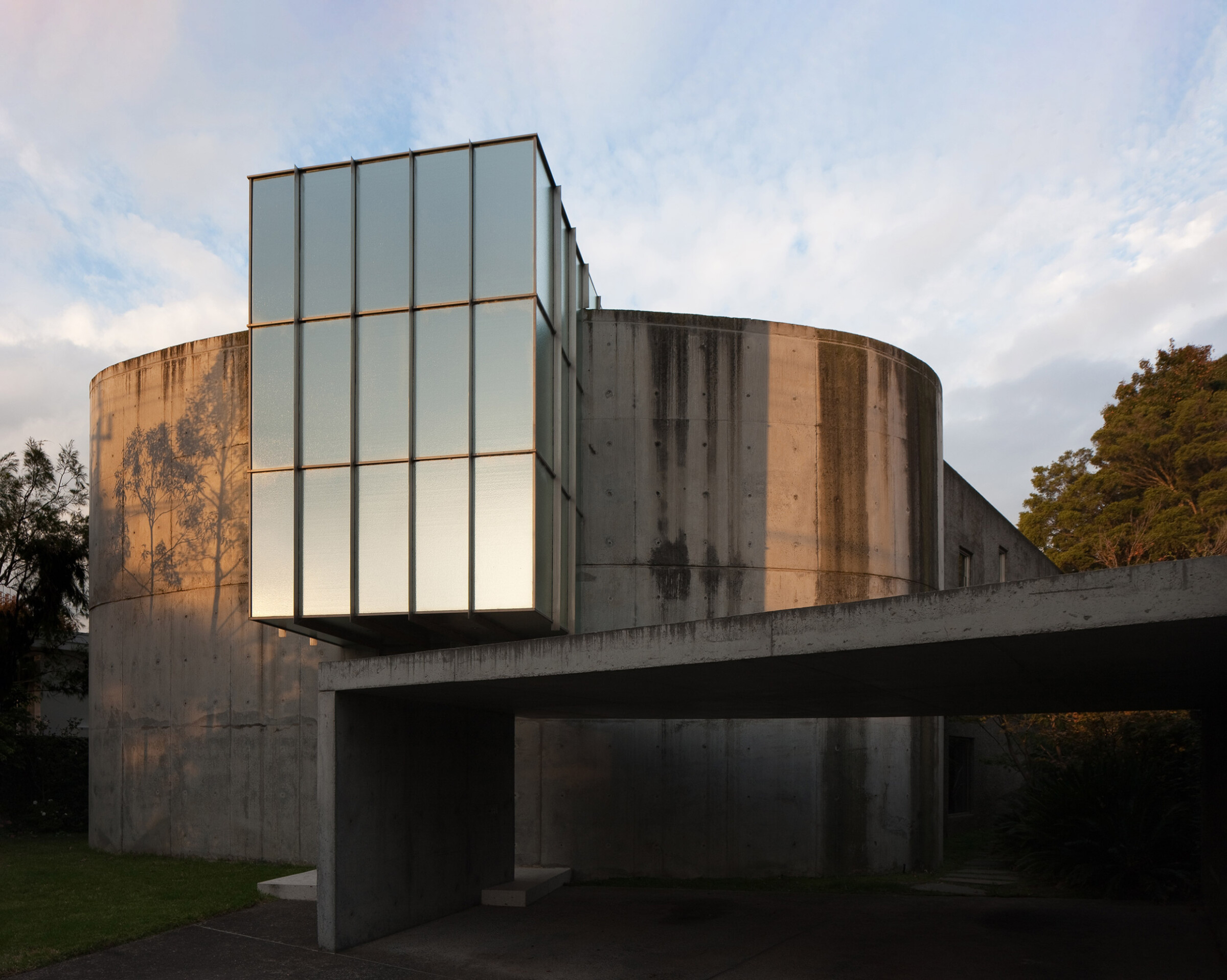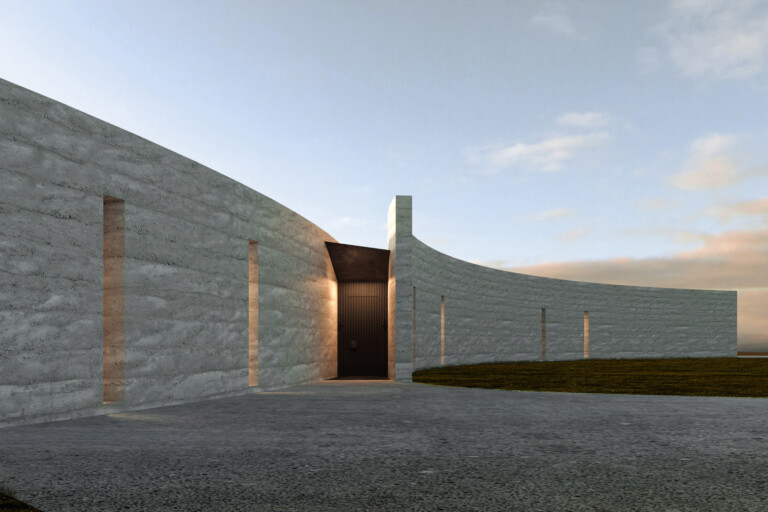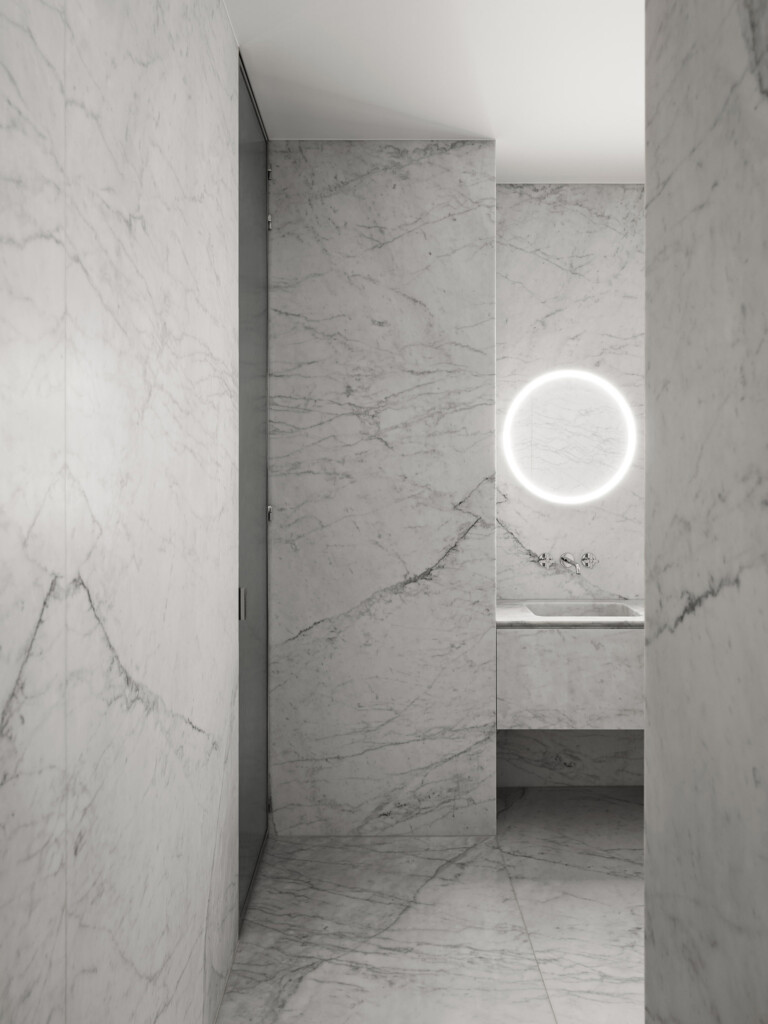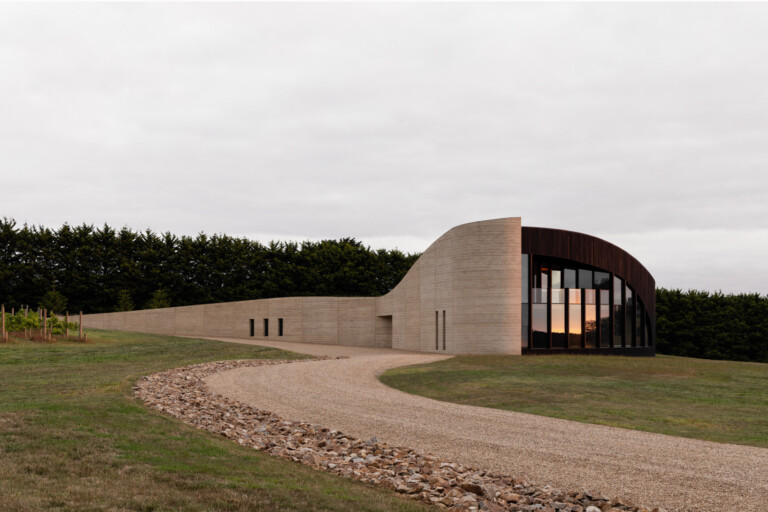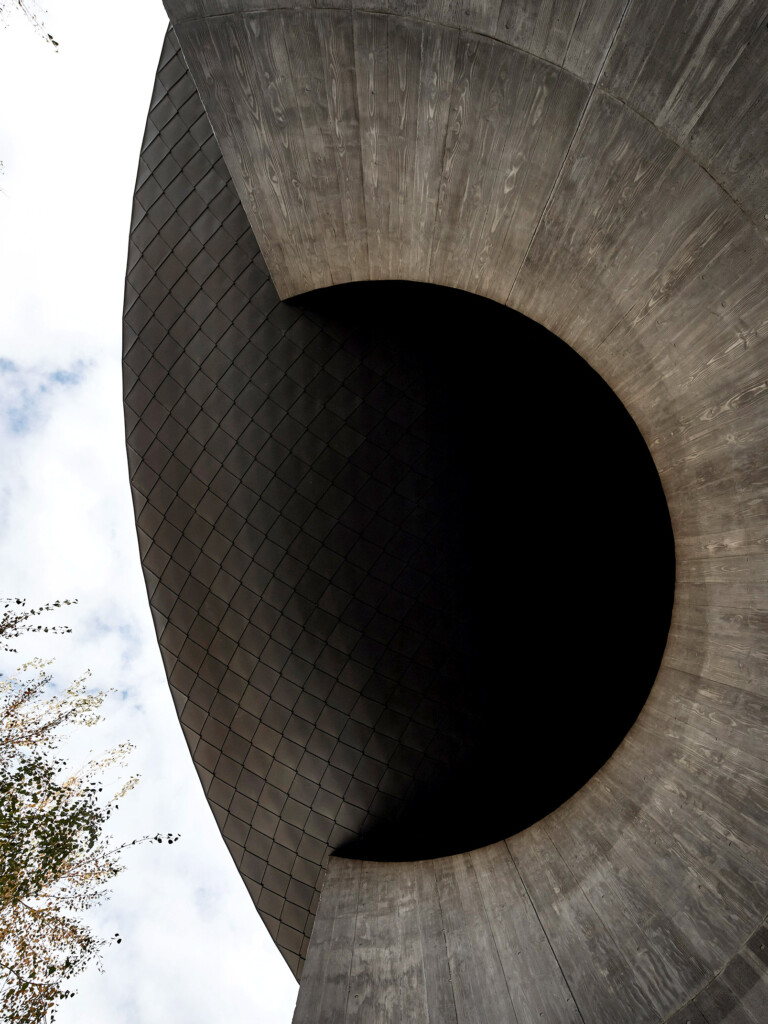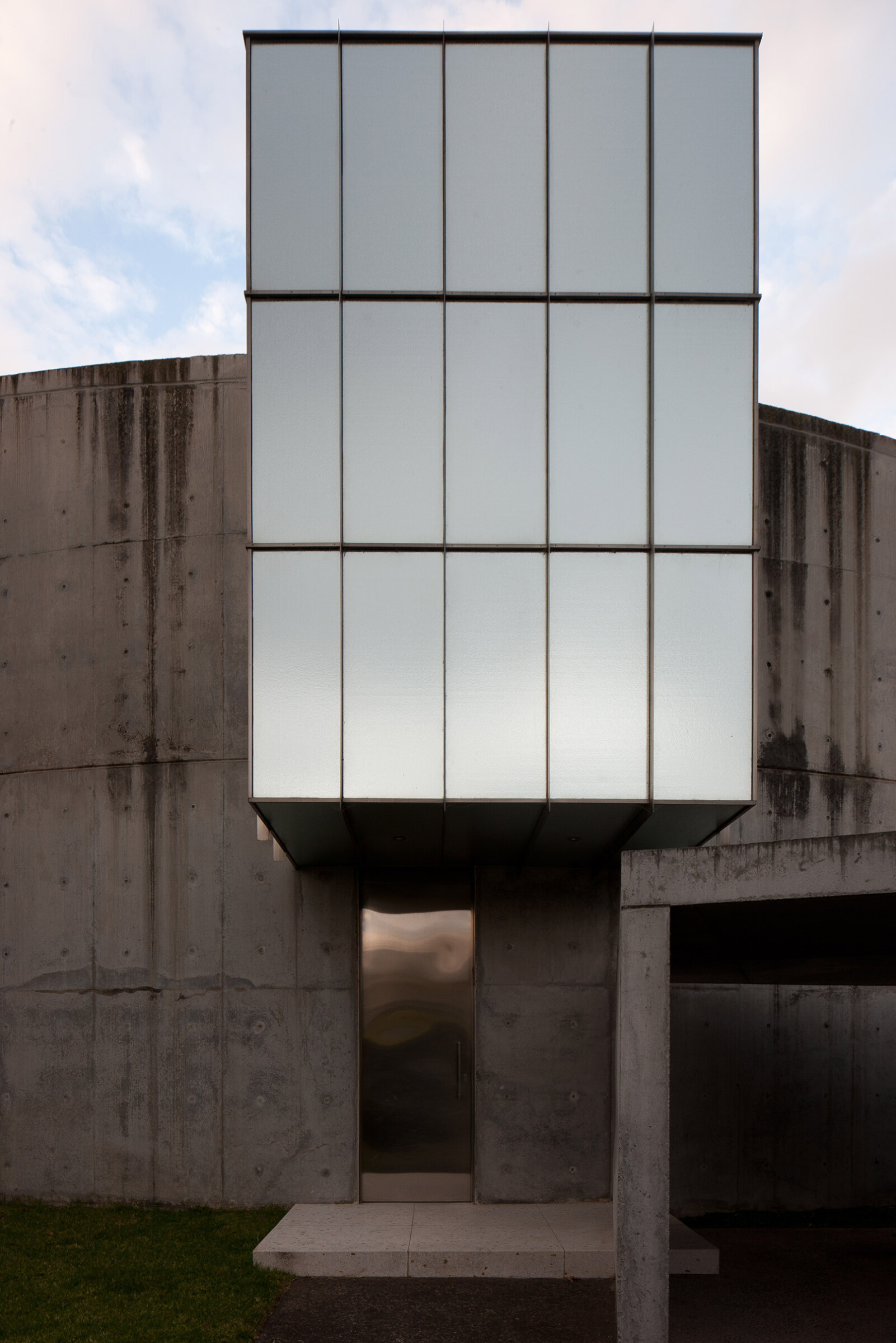
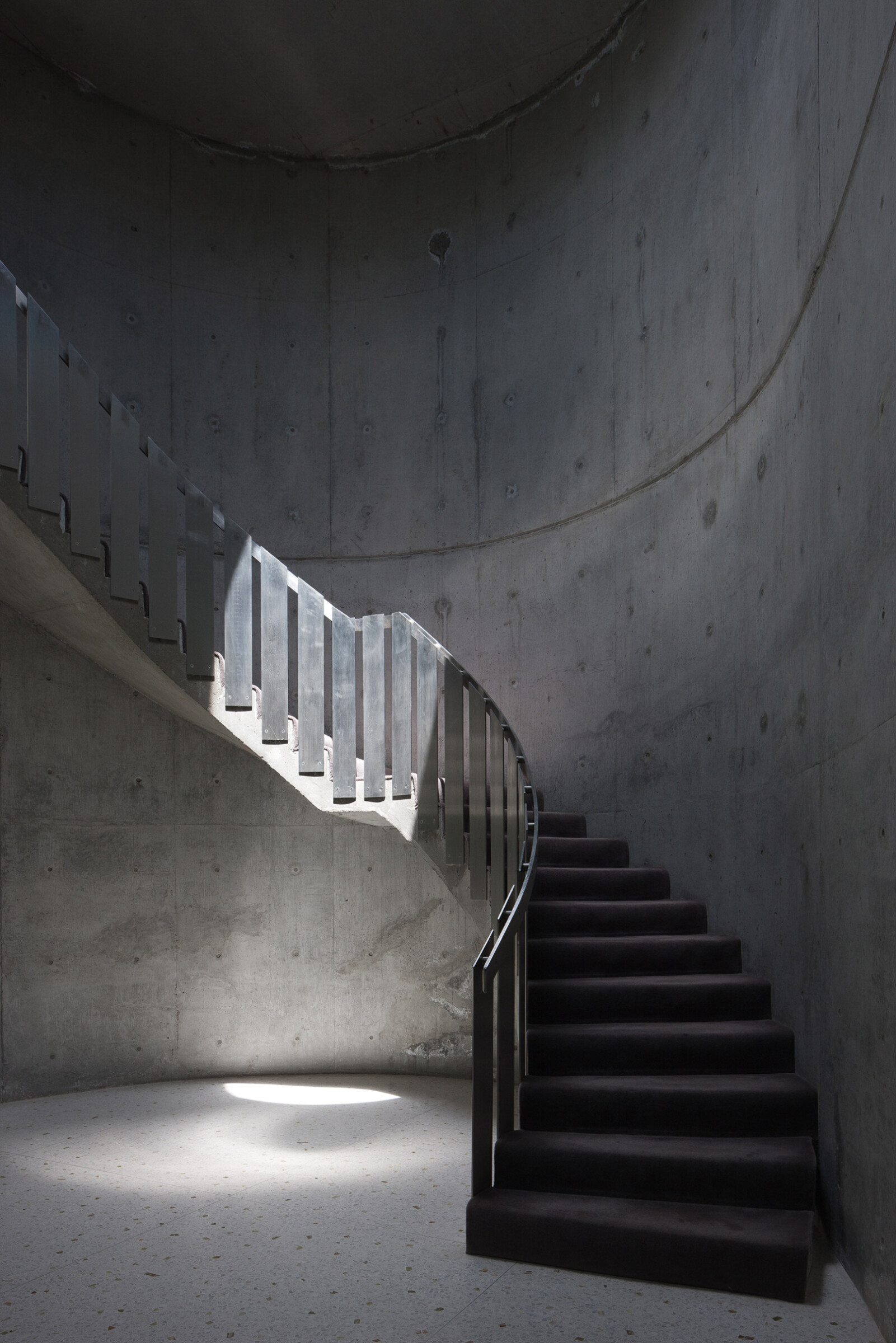
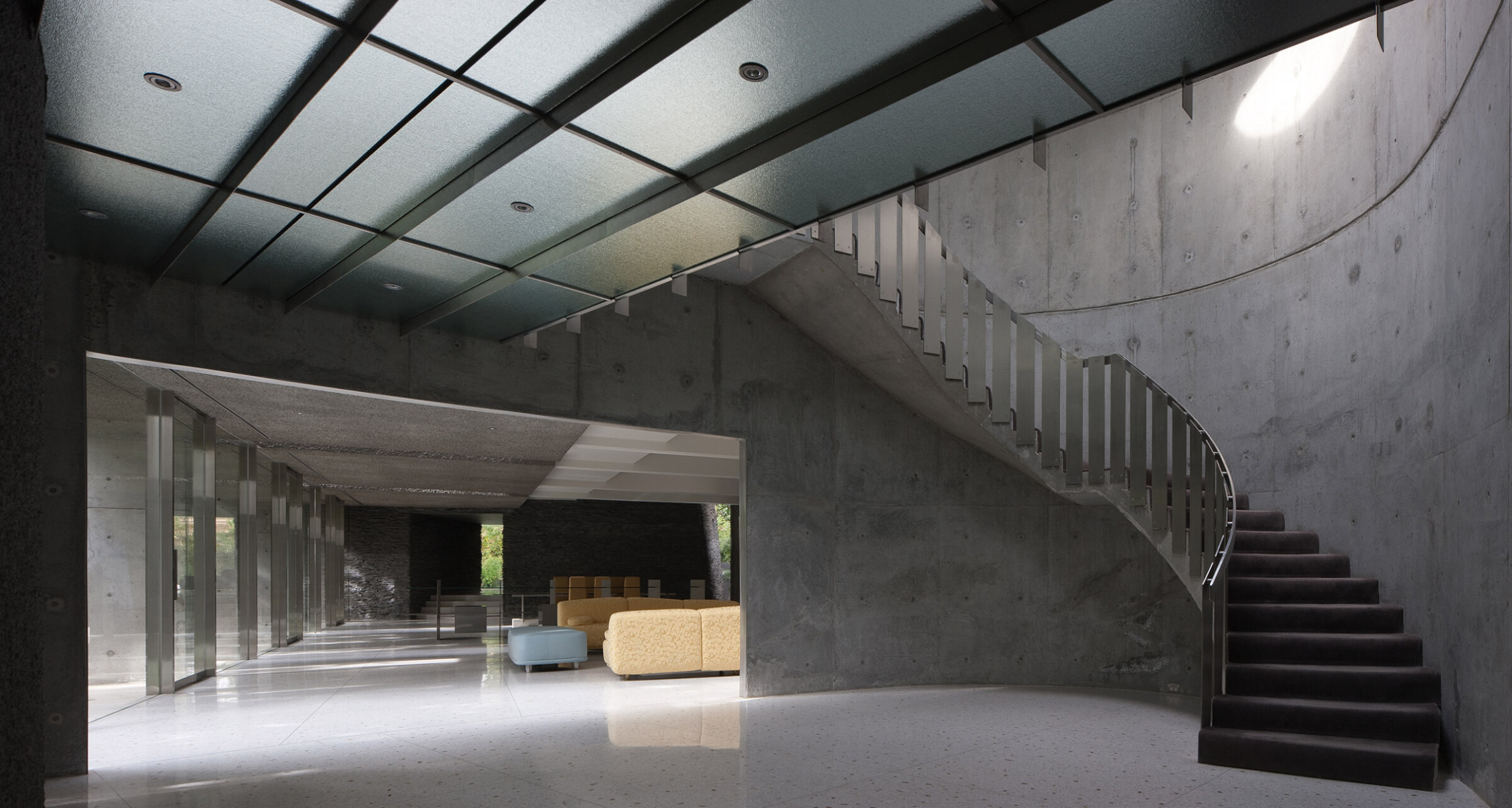
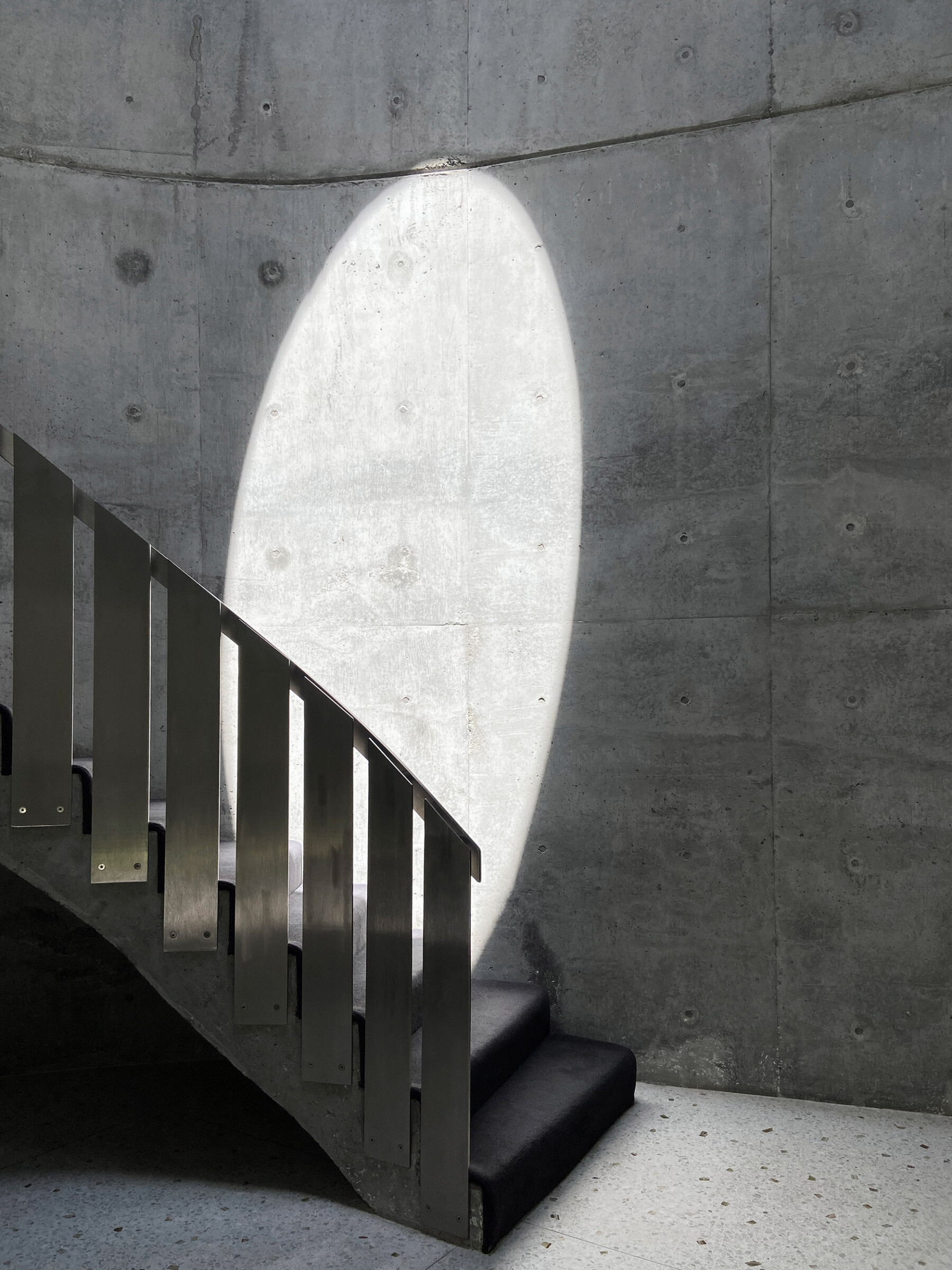
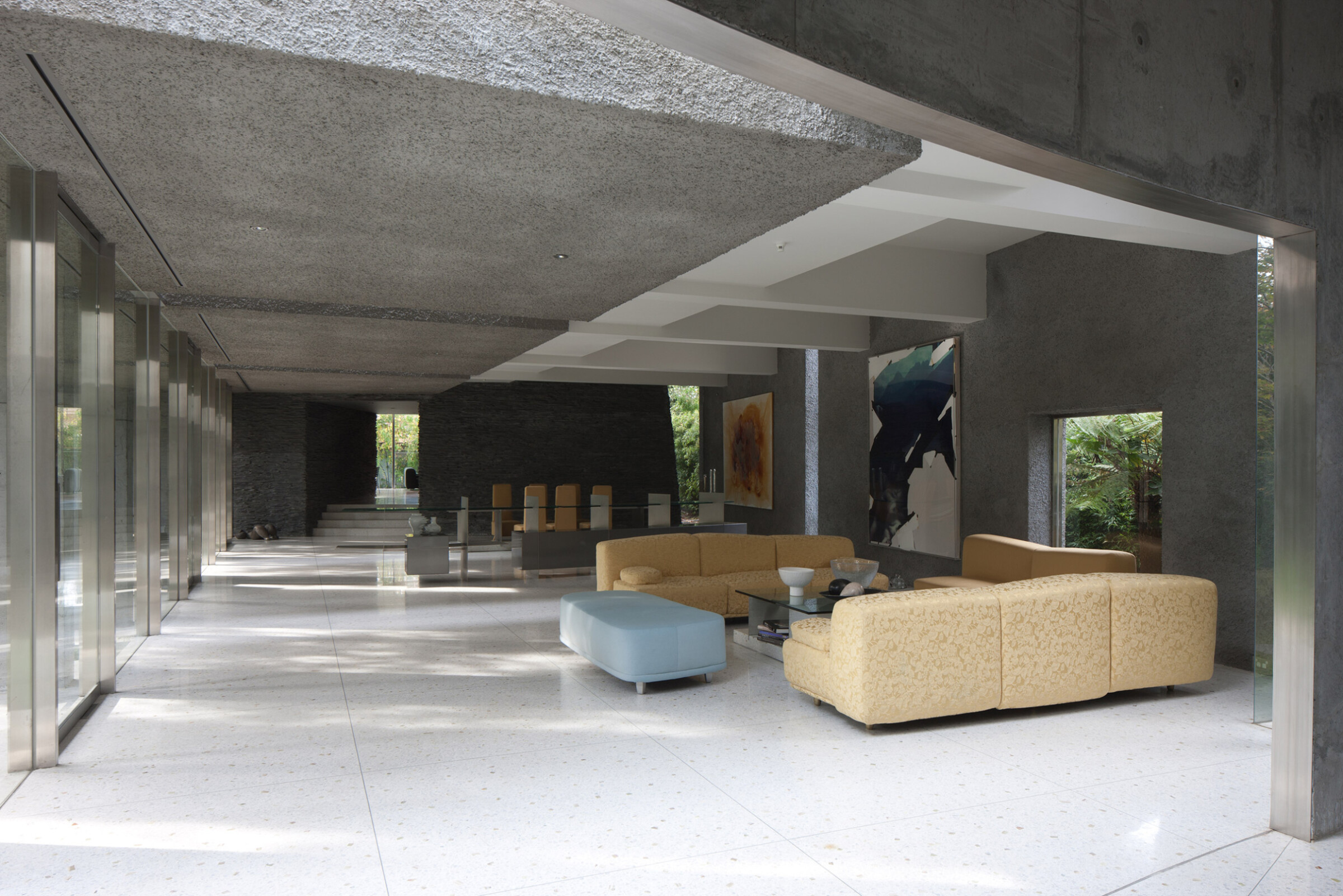
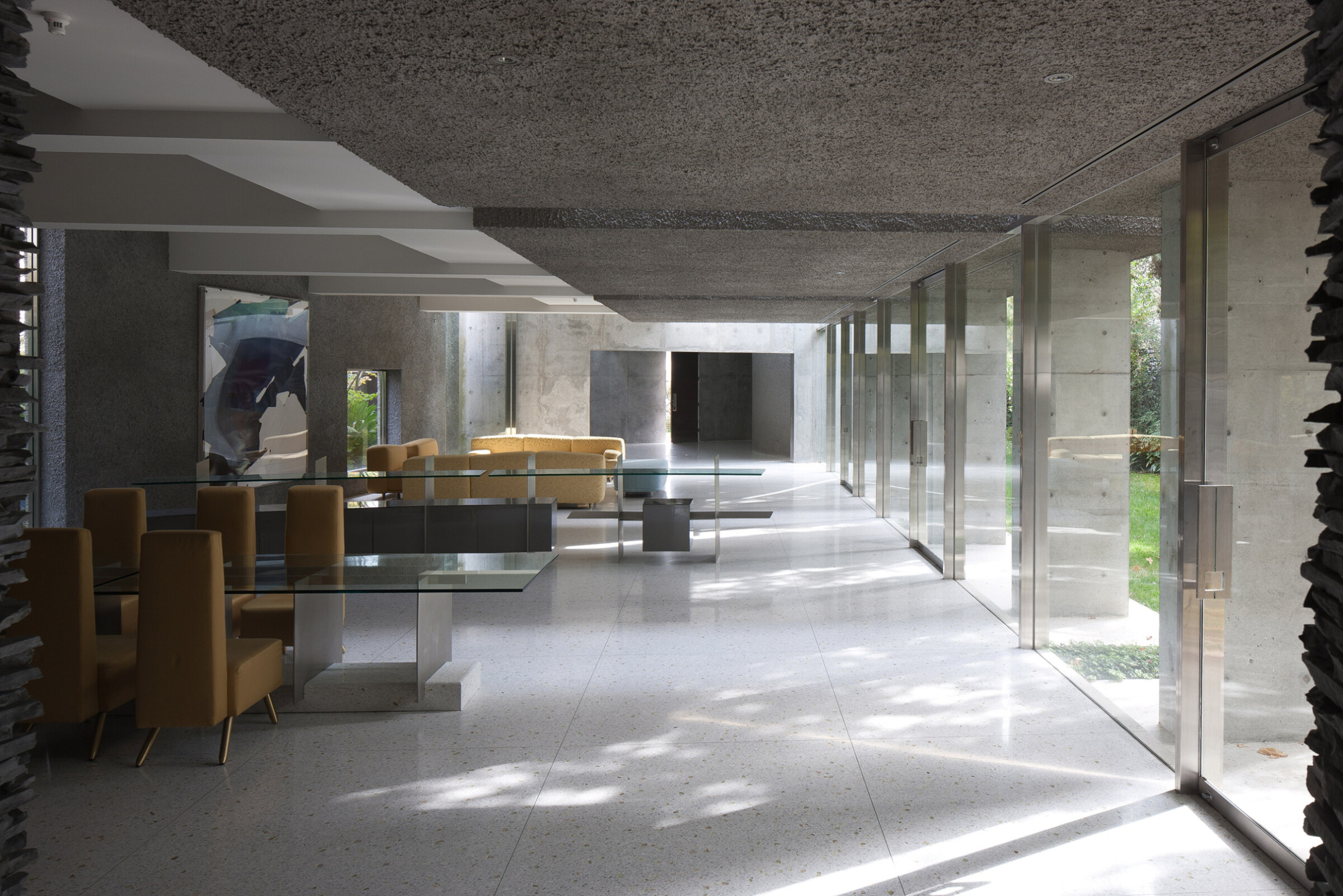
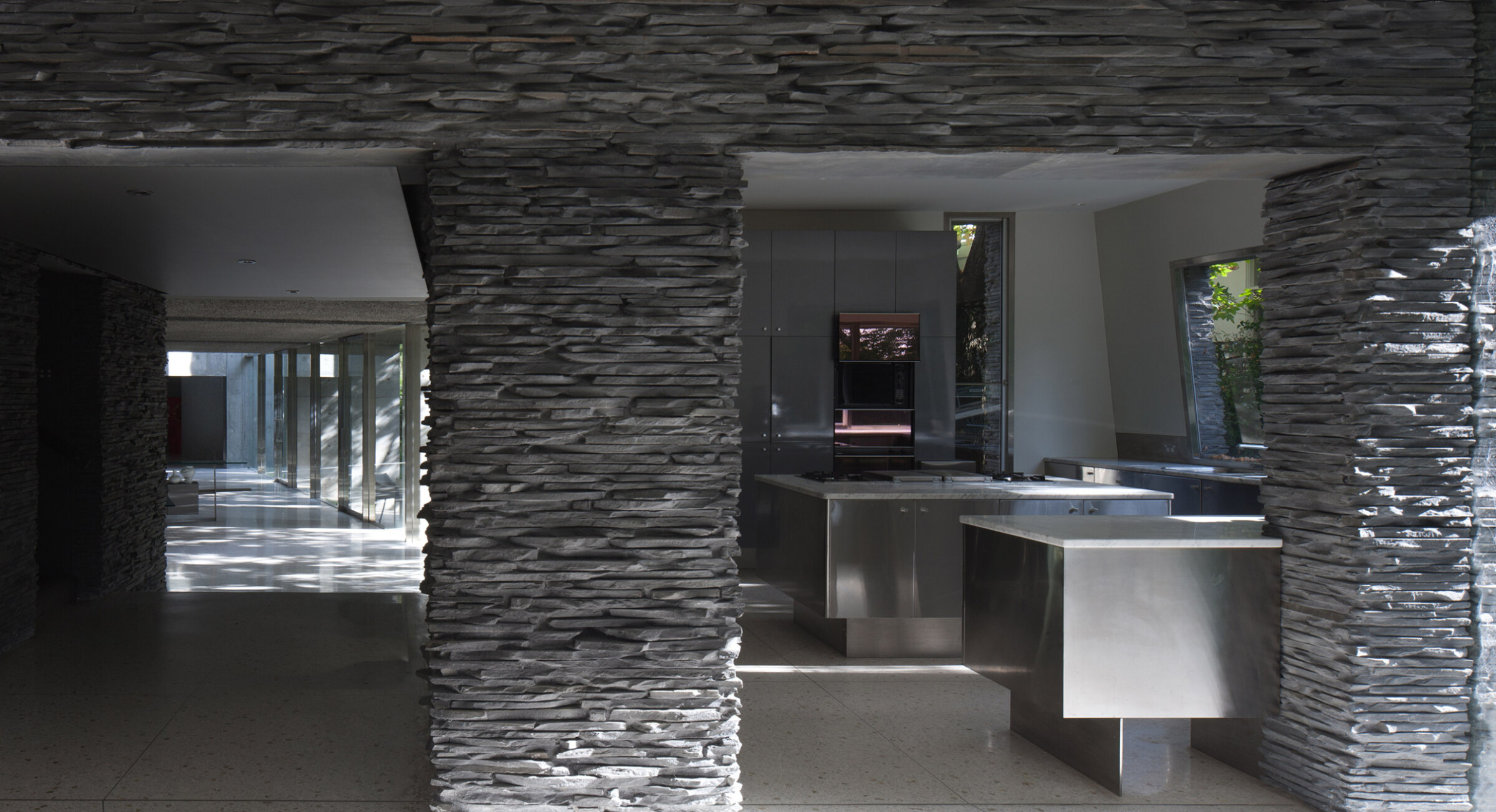
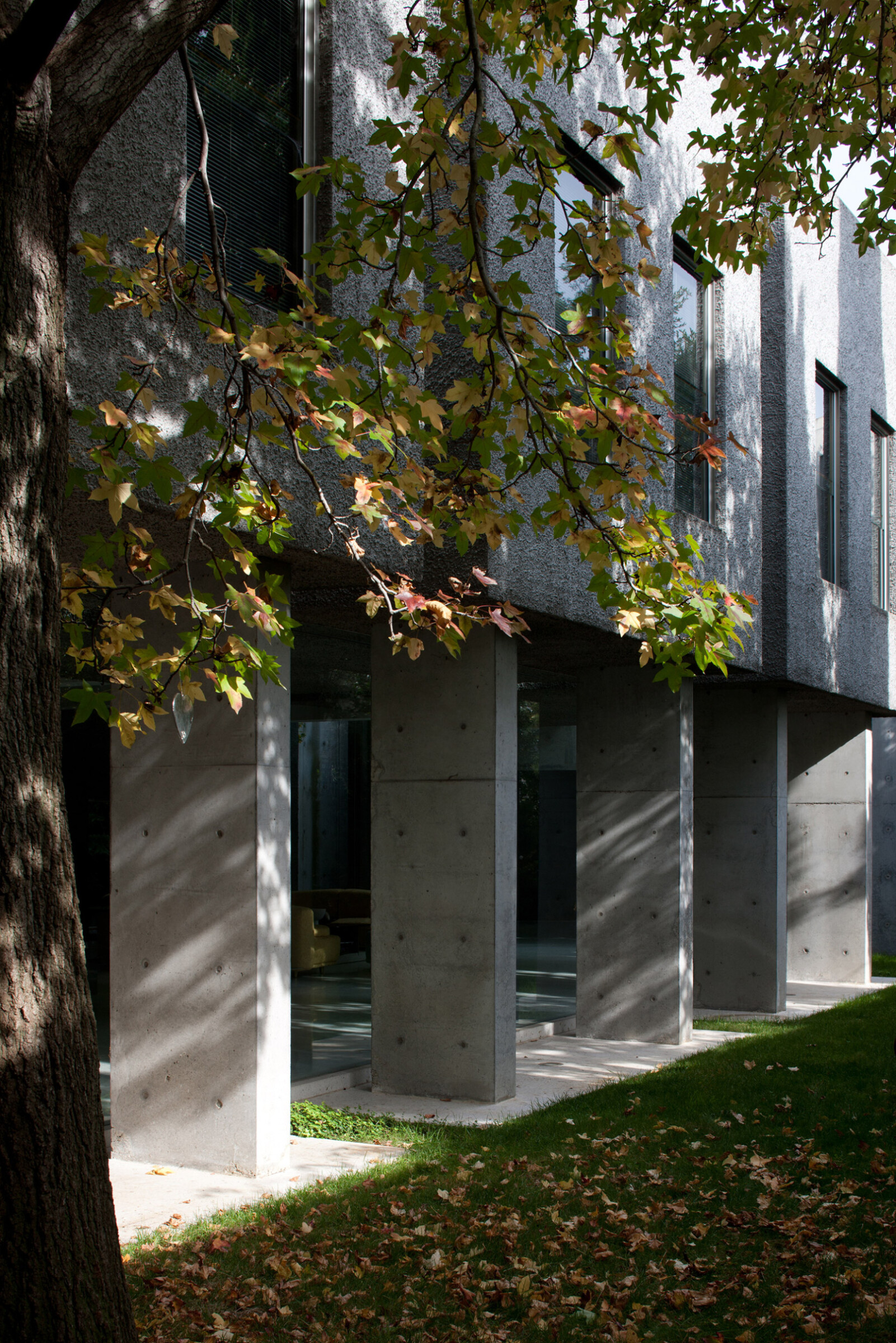
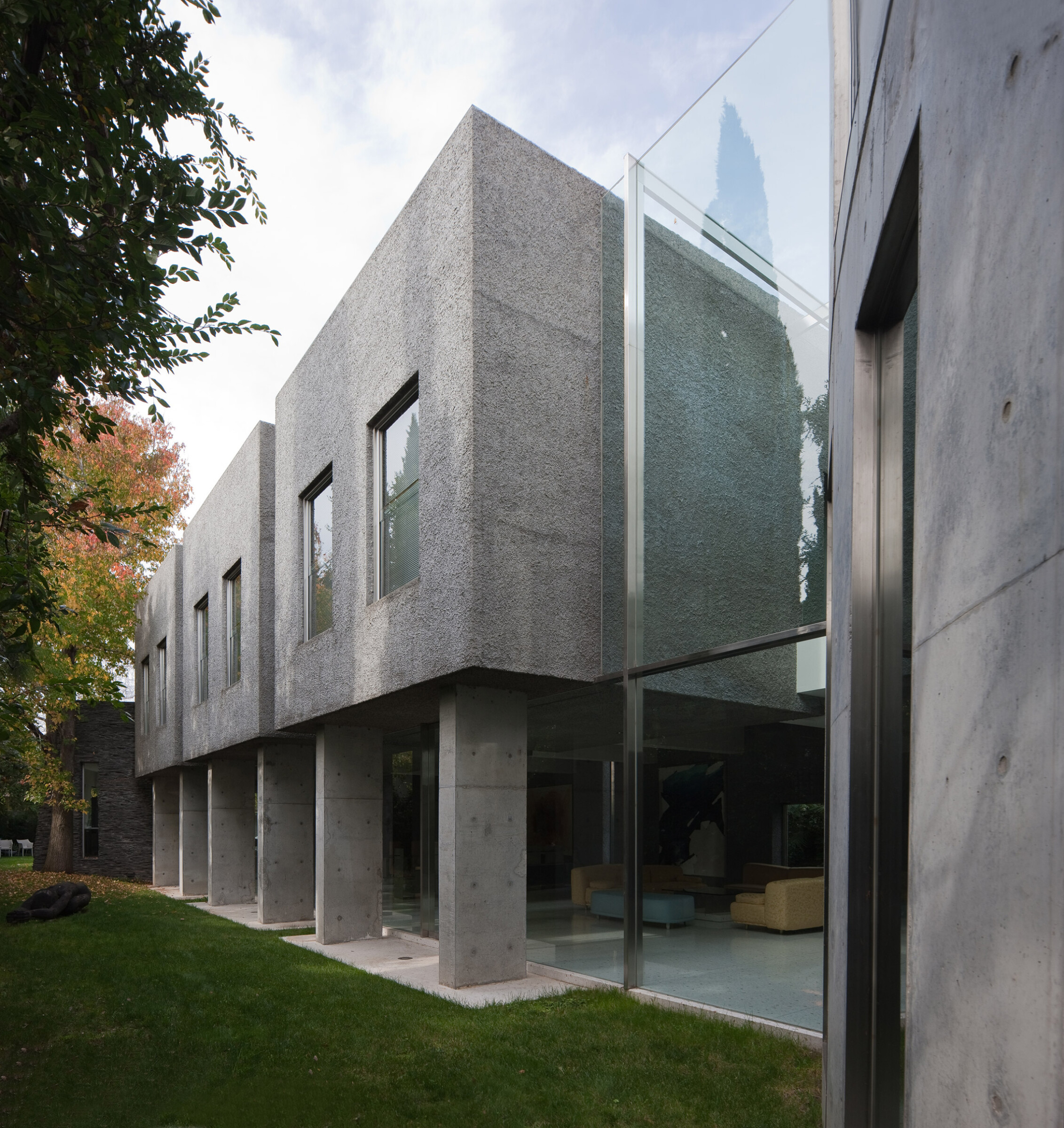
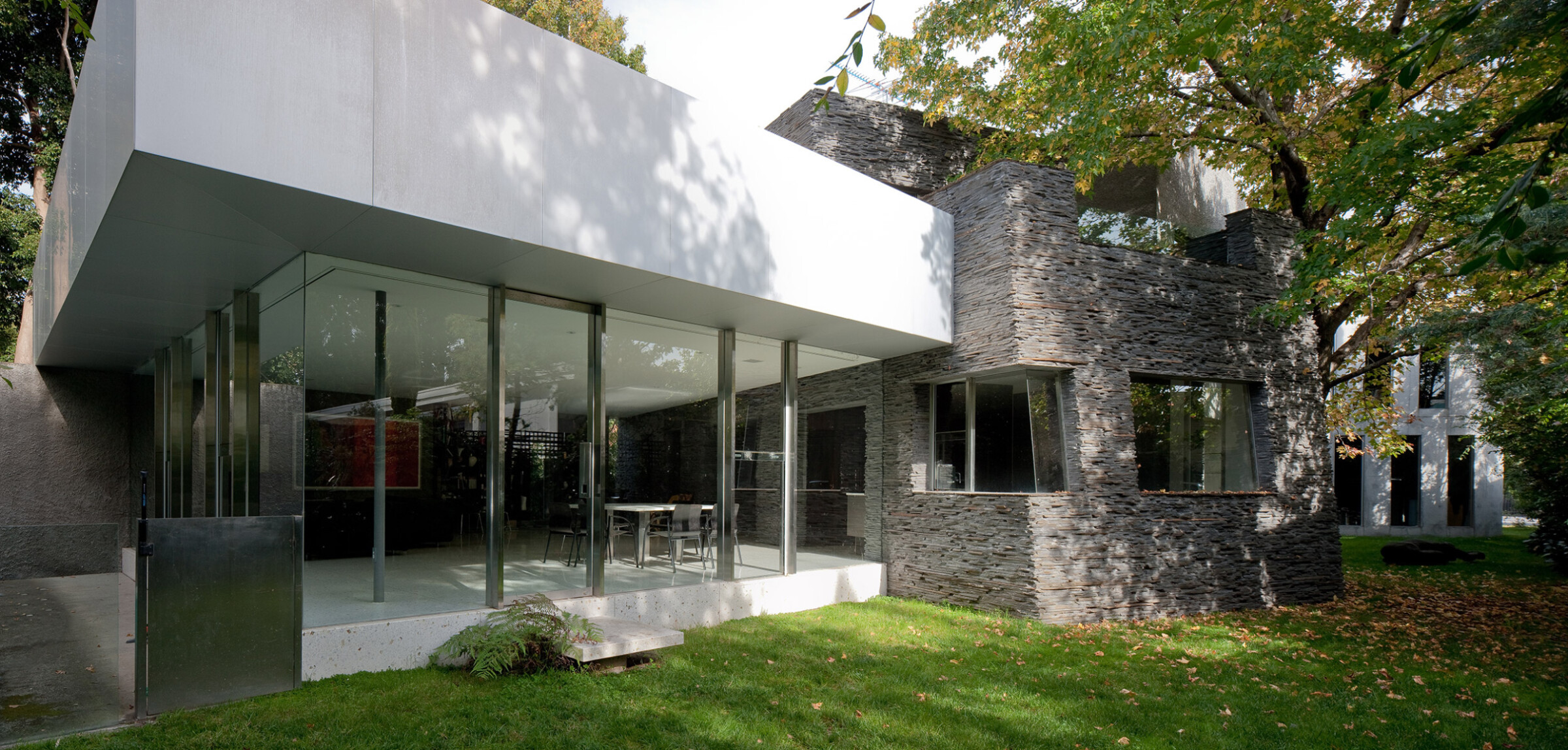
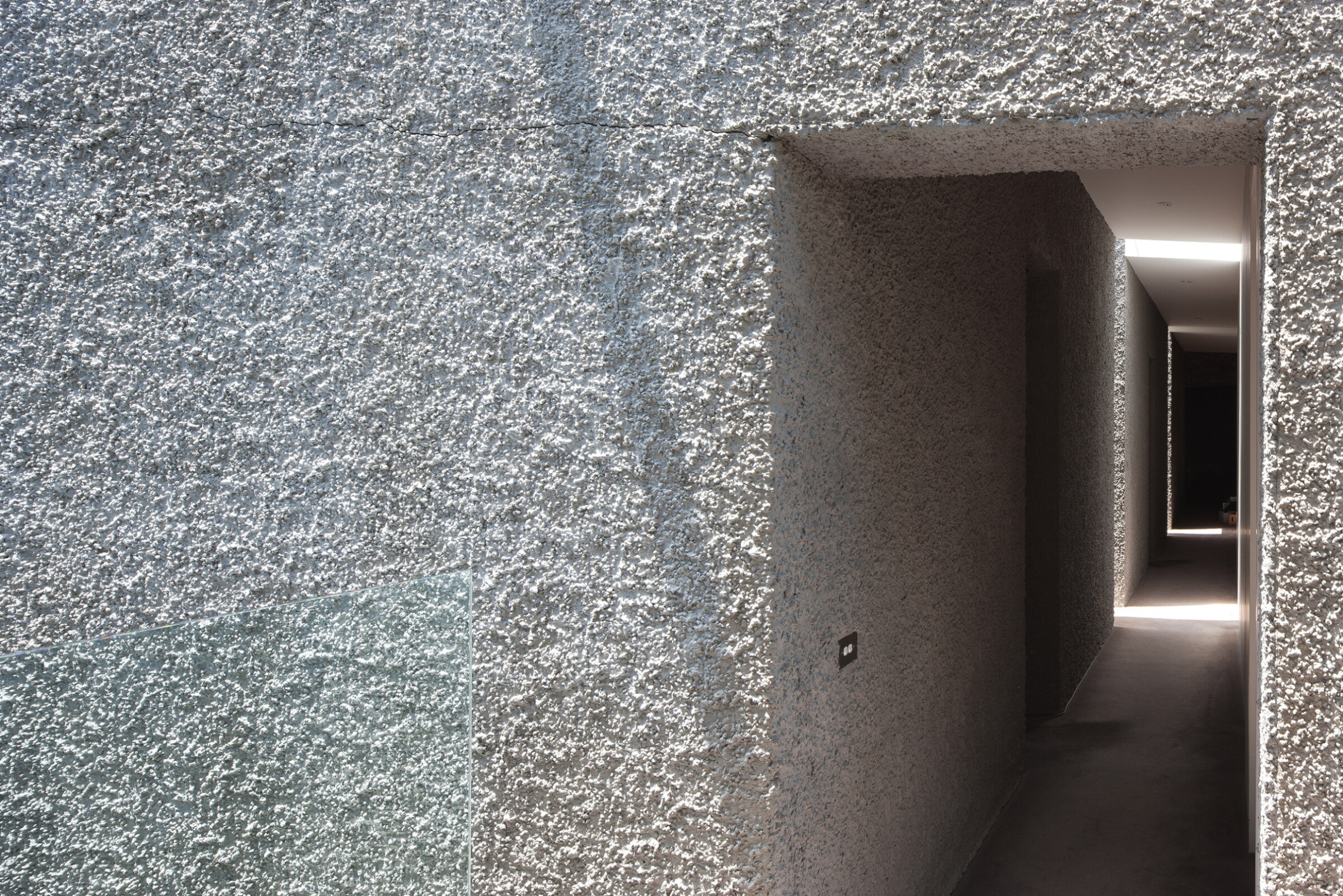
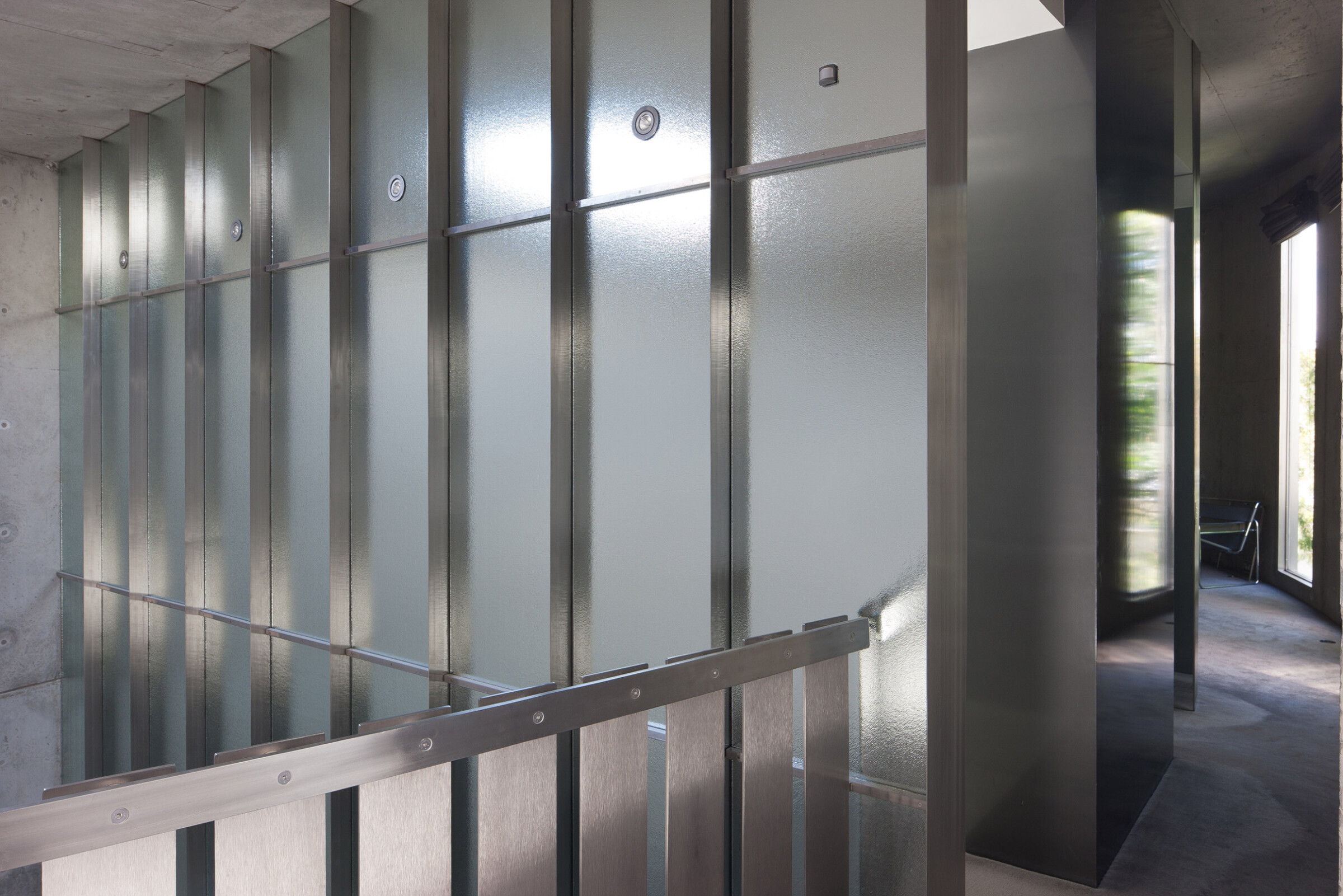
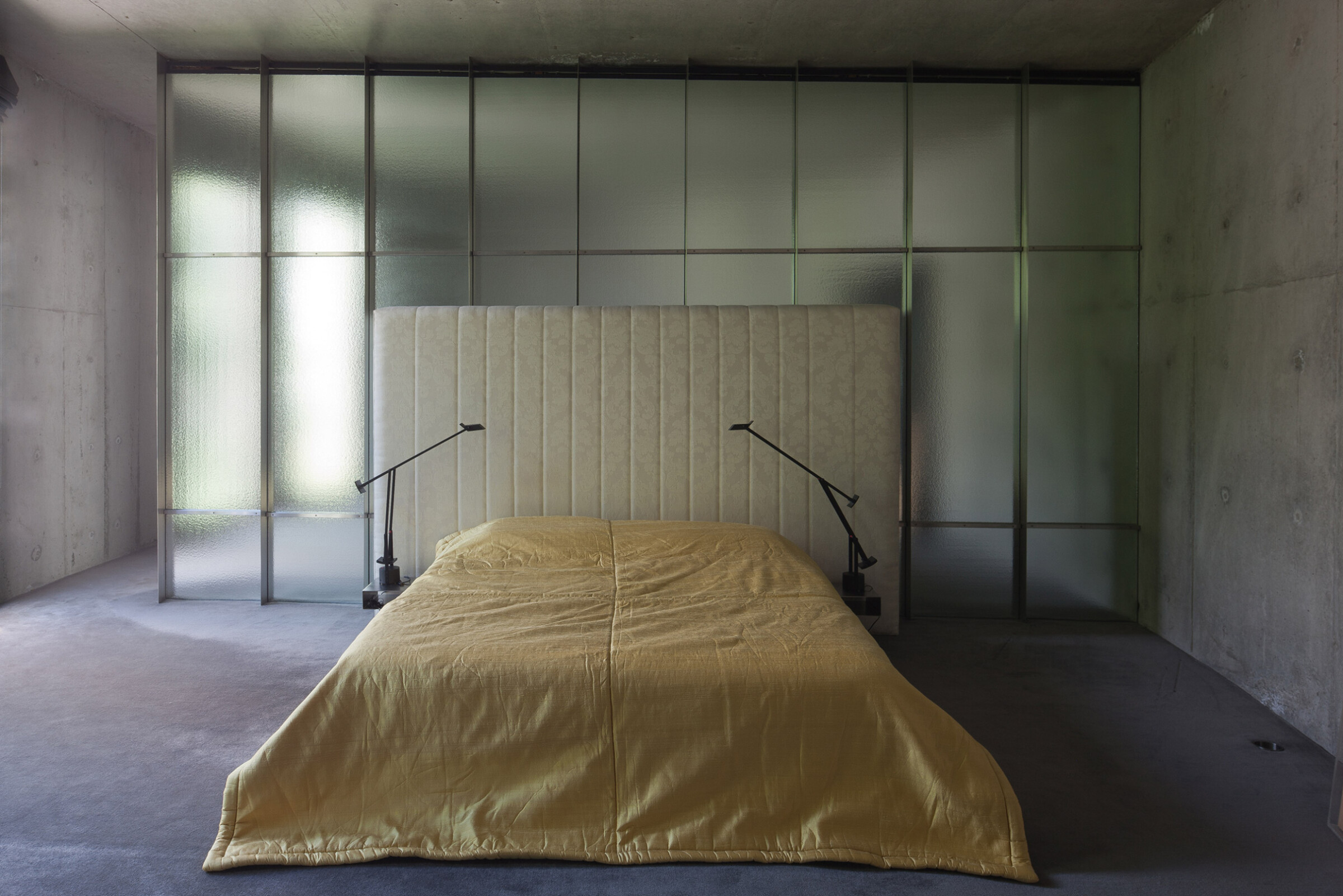
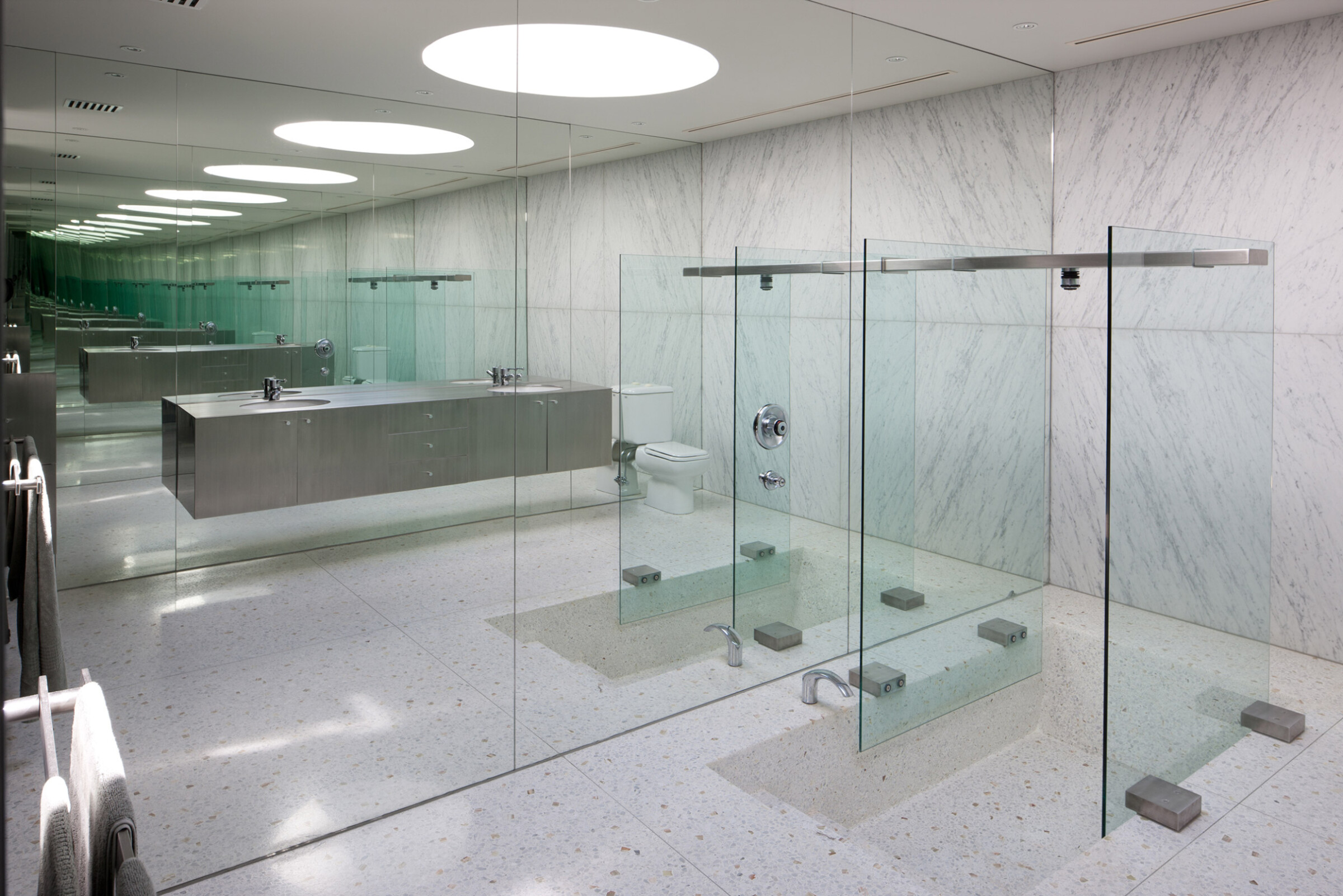
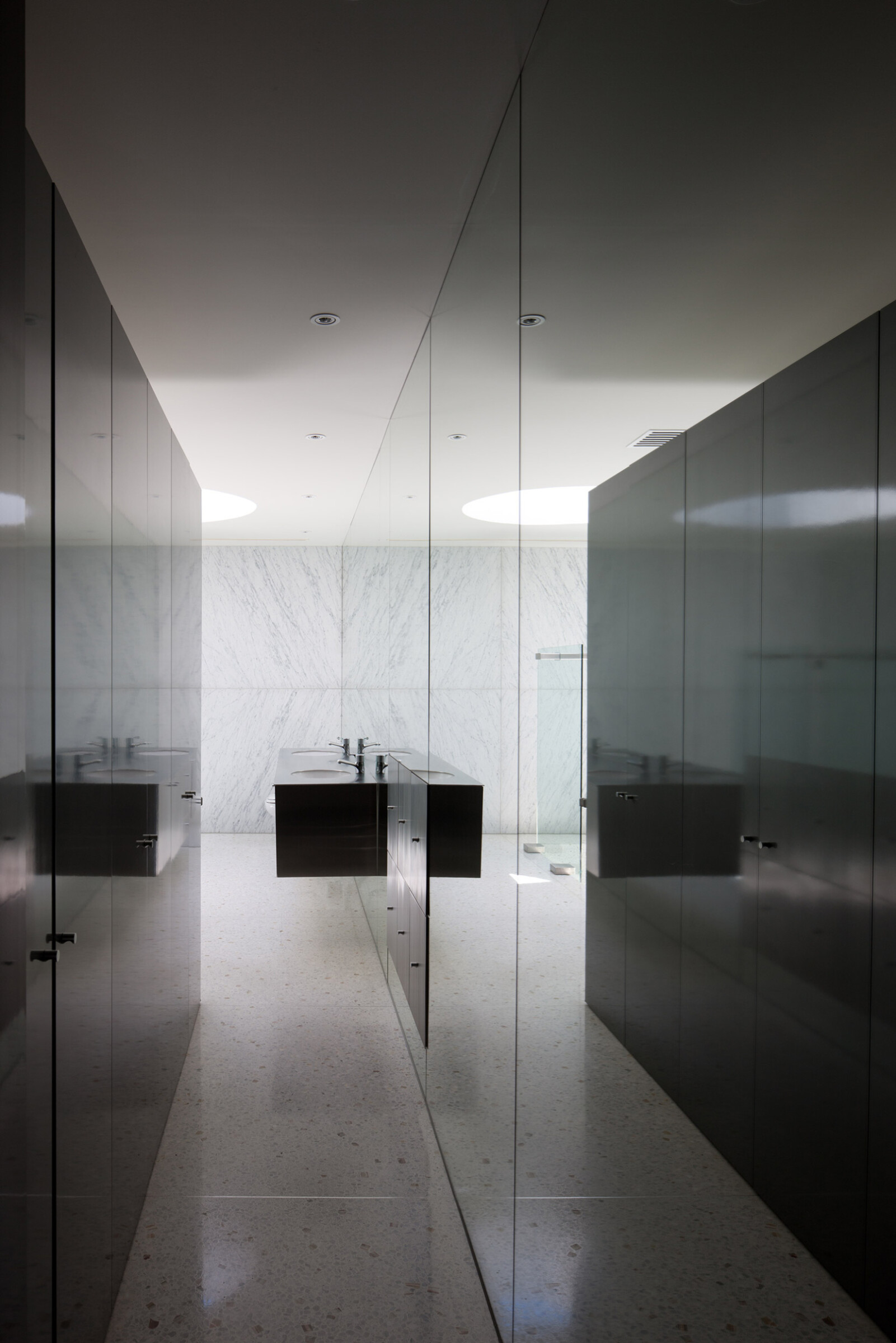
Gottlieb House
Inspired by the work of Donald Judd and Richard Serra, Gottlieb House is a concrete and steel sculpture in a suburban context. Eschewing conventions of residential design, the project considers the connection between art and architecture through explorations of space, materiality, light and form.
The inscrutable face offered to the street is characteristic of a non-hierarchical approach, which sees the building arranged as a series of massed intersecting volumes on the site. Without a front or back, Gottlieb House stands as a defined object within the surrounding garden.
As a result, the initial impression is one of abstraction. The first volume, a seemingly impenetrable cylindrical form of raw concrete, offers no indication of what may lie within. A reflective steel box jutting from its side creates a canopy that heralds the otherwise inconspicuous front door.
Stepping over the threshold, the entry sequence reveals that the steel box extends into the foyer, where it hangs overhead. The skeletal steel stair that hugs the curve of the monumental concrete wall draws the eye upwards, and the presence of a circular skylight – the only source of natural light in the otherwise dark space – further intensifies the drama of the double-height foyer.
The theatricality of this first shaft of light, shifting in quality throughout the day and so transforming the experience of the space, foregrounds the critical role of light throughout the home. Slivers of glass appear to fracture the robust concrete forms, articulating the intersection between the volumes and giving rise to an illusion of additional height at ground level.
Here, the siting approach that envelops the building in the garden on all sides enhances the sense of scale in the expansive ground-floor entertaining area, capable of hosting 300 guests. With the house pulled away at the boundaries, a sense of breathing space is created internally, which balances the weight of the concrete volumes overhead.
The abundance of natural light distinguishes these public spaces from the private areas of the home. Spans of glass to the lower level characterise the living and entertaining spaces as light-filled and immersed in green views of the garden. By contrast, the study – tucked away behind the concrete structure – and the upper level, which contains the bedrooms each within its own discrete volume, are relatively dark and cave-like.
Balancing these two conditions, the kitchen and private living and dining area are more domestically scaled, mediating the openness of the public entertaining spaces and the enclosure of the most private quarters. The kitchen is set within its own stone volume that creates a sense of containment, while the living and dining space bathes in views of the pool and garden.
Little material distinction is made between interior and exterior. Externally, the concrete has been deliberately allowed to weather. The simplicity of the form means that there are no gutters, and water flows down the face of the concrete, creating natural markings over time.
Used internally, terrazzo floor tiles and marble both gesture to the exterior condition. A green fleck in the terrazzo is suggestive of leaves strewn across pavement and the grey striated marble reminiscent of the patinated streaking on the surface of the concrete. Similarly, expanses of mirror in the bathroom and stainless-steel cabinetry in the kitchen recall the reflective steel box set above the entry.
With a defined design language unifying all aspects of architecture and interior, Gottlieb House offers a unique response to its site as well as its broader architectural and artistic considerations. Sculptural in both form and agenda, the building sits as a singular entity its residential context – a distinctive object that nonetheless entirely fulfils its domestic requirements as a family home.
